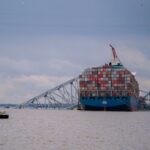A.M. Best Co. has affirmed the financial strength rating of ‘A’ (Excellent) and issuer credit rating of “a” of South Korea’s Dongbu Insurance Company, Ltd., both with stable outlooks. “The ratings reflect Dongbu’s solid market profile, sound underwriting performance and adequate capitalization level,” Best explained. “Dongbu has maintained a market share of 15 percent in terms of direct premiums written, remaining the third-largest non-life insurer in South Korea for three consecutive years. Its five-year average operating ratio stood at 92 percent and compared favorably to its peers. Dongbu recorded a stable expense ratio and combined ratio of approximately 22 percent and 99 percent, respectively, in fiscal year 2008, despite severe competition and further investment in the new sale channel.” Best also noted that Dongbu’s capital and surplus “was maintained at approximately KRW 840 billion (USD 604 million) in fiscal year 2008, while its risk-adjusted capitalization was considered adequate as measured by Best’s Capital Adequacy Ratio. The local solvency ratios slightly decreased from 222 percent in fiscal year 2007 to 193 percent in fiscal year 2008. The ratio stands at a comfortable level, and the company did not reevaluate its real estate assets to increase the solvency ratio.” The Company did suffer from “some deterioration of underwriting in the long-term line and underwriting losses in commercial lines,” which should be considered as offsetting factors. “The long-term line remained Dongbu’s core business, contributing 62 percent of the direct premiums written in 2008,” best continued. “The risk loss ratio worsened from 78 percent in fiscal year 2007 to 81 percent in fiscal year 2008 as a result of the deterioration in the risk loss ratios of the integrated insurance, accident and driver insurance. However, the performance of this line is expected to improve with the introduction of a deductible in the medical insurance line in October 2009 and the economic recovery. The commercial line contributed 9 percent to Dongbu’s direct premiums written. This line recorded a loss ratio and a combined ratio of 77 percent and 106 percent, respectively, in fiscal year 2008 due to a major claim from the refund guarantee.”
A.M. Best Co. has affirmed the financial strength rating (FSR) of ‘B++’ (Good) and issuer credit rating (ICR) of “bbb+” of China Taiping Insurance (Singapore) Pte. Ltd. (formerly China Insurance Co. [Singapore] Pte. Ltd), with stable outlooks. Best then said it has withdrawn the ratings and assigned a NR-4 to the FSR and “nr” to the ICR. “This action reflects China Taiping Insurance (Singapore) Pte. Ltd. management’s decision to withdraw from A.M. Best’s interactive rating process,” said the bulletin. Best added that the “ratings reflect China Taiping Insurance (Singapore) Pte. Ltd.’s consistent improvement in its overall underwriting performance and adequate risk-adjusted capitalization as measured by Best’s Capital Adequacy Ratio. Partially offsetting rating factors include the company’s continued unprofitable underwriting results from its motor line of business.”
A.M. Best Co. has affirmed the financial strength rating of ‘A-‘ (Excellent) and issuer credit rating of “a-” of Malaysian Reinsurance Berhad (Malaysian Re), both with stable outlooks. The ratings reflect Malaysian Re’s “consistently profitable operating performance, prudent investment portfolio and improved presence in overseas markets,” said best. “The company is a key subsidiary of MNRB Holdings Berhad (MNRB Group) (Malaysia), and the ratings acknowledge this group synergy and administrative support.” Best added that Malaysian Re’s operating result has been favorable, as evidenced by the average operating ratio of 80.6 percent (excluding unrealized investment gains/losses) over the past five years. For fiscal year (FY) 2008, notwithstanding a drop in the company’s investment earnings, Malaysian Re’s operating result remained sound with support from its stable underwriting performance. The company maintained a combined ratio of 95.9 percent in FY 2008. There was an increase in the loss ratio to 64.2 percent from 60.7 percent in FY 2007 due to the deteriorated loss experience of local treaty, auto-facultative and overseas facultative businesses. Given Malaysian Re’s prudent investment strategy, approximately 64 percent of its total assets were invested in cash and fixed income securities as of June 30, 2009.” Best said it “expects that the company will achieve a stable investment income going forward. Malaysian Re continues to improve its presence in overseas markets. Gross premium written (GPW) contributed from overseas markets increased to 25 percent in FY 2008 from 19 percent in FY 2007. In addition, with the establishment of Malaysian Re (Dubai) in 2006, the company has further developed its market presence in the Middle East and North African (MENA) regions.” Best also expects that Malaysian Re will benefit from the additional source of premium income going forward.” However, “potential pressure on Malaysian Re’s capitalization from overseas business expansion and future capital demands from sister companies, and the competitive business environment in local and overseas markets,” should all be taken into account as offsetting factors. Best observed: “Given that Malaysian Re is expanding its overseas portfolio, more capital is required to support its growth going forward. In addition, A.M. Best anticipates that any potential capital support related to the expansion of MNRB Group’s subsidiaries would exert pressure on Malaysian Re’s risk-adjusted capitalization.”
Was this article valuable?
Here are more articles you may enjoy.

 Texas Among Several States Facing New Fire Risks: Weather Watch
Texas Among Several States Facing New Fire Risks: Weather Watch  Bridge Disaster in Baltimore Gets FBI Criminal Investigation
Bridge Disaster in Baltimore Gets FBI Criminal Investigation  Travelers Survey: Distracted Drivers Making US Roads More Dangerous
Travelers Survey: Distracted Drivers Making US Roads More Dangerous  Viewpoint: How Generative AI Enables a Brighter Claims Future in 2024 and Beyond
Viewpoint: How Generative AI Enables a Brighter Claims Future in 2024 and Beyond 